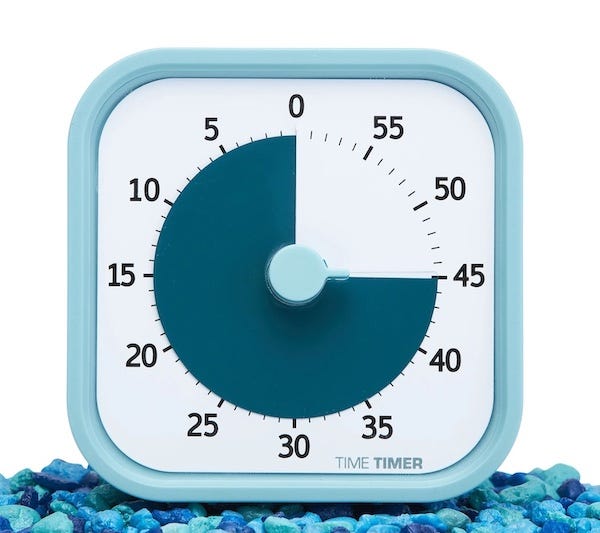Jerry Seinfeld's Creative Process
Seinfeld's creative process is the key to his longevity as one of the best comedians in the world
I immigrated to the US in 1997 as a grad student, and I was assigned a Pakistani roommate upon arrival. He happened to be a massive fan of the show "Seinfeld", which I had never heard of in India where I grew up. That year was going to be the series' ninth and final season, and there was a buzz about it throughout the campus.
"Seinfeld" soon became my favorite TV show. It was eccentric, irreverent, non-melodramatic, and single-pointedly focused on being funny. Even as a foreigner, I could sense that it had captured the zeitgeist of New York City in the 90s with its sharp writing. I became a fan of Jerry Seinfeld.
Seinfeld is a unique artist, and he draws inspiration from other vocations for his creative process and work ethic. Like a scientist, he continuously experiments with new ideas. Like a sociologist, he is always observing human beings for their quirks. Like an engineer, he studies the structure of a joke to uncover why it works (or doesn't). Like a musician, he fine-tunes his comedy until it develops a rhythm. Like an elite sportsperson, he believes in "putting in the work" during the off-season.
Based on listening to several of his interviews, I've summarized below the four key elements of his creative process.
1 - Writing every day
At the heart of Seinfeld's process is the discipline of writing every single day, something I touched upon in my previous post "Daily Practices of Highly Creative People".
"I grasped the essential principle of survival in comedy really young. That principle is: you learn to be a writer. It’s really the profession of writing, that’s what standup comedy is."
Jerry Seinfeld on The Tim Ferris Show.
2 - Setting up "writing sessions"
On The Tim Ferris Show, Jerry acknowledges that writing is hard, excruciating, and painful. At the same time, standup comedy is really a profession of writing, and he cannot imagine letting a day go by without putting pen to paper. He writes every single day on a yellow legal pad with a Bic pen.
His method of overcoming the resistance to writing is to set up "writing sessions" of a pre-determined length of time, e.g. thirty minutes or one hour.
"if you’re going to write, make yourself a writing session. What’s the writing session? I’m going to work on this problem. Well, how long are you going to work on it? Don’t just sit down with an open-ended, 'I’m going to work on this problem.' That’s a ridiculous torture to put on a human being’s head."
Jerry Seinfeld
This is Jerry's version of the Pomodoro technique which I find very useful. For me, 20 minutes is the ideal length for a writing session, and I actually set an audio alarm to go off at the end of it. The short 20-minute timer tricks the brain into believing that it's not that difficult. It works like magic!
3 - The two-phased writing process
We are all gifted with the ability to imagine (right brain) and think critically (left brain). These opposing mindsets are necessary to produce a creative outcome. However, left to their own devices, these mindsets tend to cancel each other out. A typical example is writer's block or getting intimidated by the blank page.
Seinfeld uses a simple and effective method to compartmentalize being imaginative vs. critical:
"The key to writing, to being a good writer, is to treat yourself like a baby, very extremely nurturing and loving, and then switch over to Lou Gossett in 'Officer and a Gentleman' and just be a harsh prick, a ball-busting son of a bitch, about, 'That is just not good enough. That’s got to come out,' or 'It’s got to be redone or thrown away.'"
Jerry Seinfeld
When Seinfeld treats himself "like a baby", he is allowing his right brain to dominate - to be imaginative, intuitive, and free-flowing. He leaves a gap of a day before switching to the Lou Gossett "ball-busting" mode when he allows the left brain to dominate - to be critical, logical, and analytical.
In this way, Seinfeld is able to use opposing mindsets to achieve a highly creative outcome.
4 - Continuous Refinement
According to Roald Dahl, "Good writing is essentially rewriting". Once Seinfeld is generally happy with his material, it is not the end, but the start of the process.
"And then we go from there to the stage with it. From the stage, the audience will then — I imagine, it’s a very scientific thing to me. It’s like, 'Okay, here’s my experiment,' and you run the experiment. Then the audience just dumps a bunch of data on you, of, 'This is good, this is okay, this is very good, this is terrible.' That goes into my brain from performing it on stage. Then it’s back through the rewrite process and then new ideas will come."
Jerry Seinfeld
If you are a professional, then your work is a collaboration between you and the person who receives your work. Audience feedback is not an afterthought, but an integral part of Seinfeld's creative process. To me, Seinfeld is the ultimate professional.
TOOLSHED
I have a Time Timer sitting on my desk at all times to assist me in my writing sessions. It is overpriced, but I haven't found anything else that is as elegant and simple. You can get one from here.
AROUND THE WEB
I relied heavily on Seinfeld's Tim Ferris interview for today's post. If that's too long for you, check out this shorter NY Times interview:
Jerry Seinfeld Interview: How to Write a Joke | The New York Times
I had fun researching and writing today's post! Thanks for reading.
Cheers,
Rakesh





